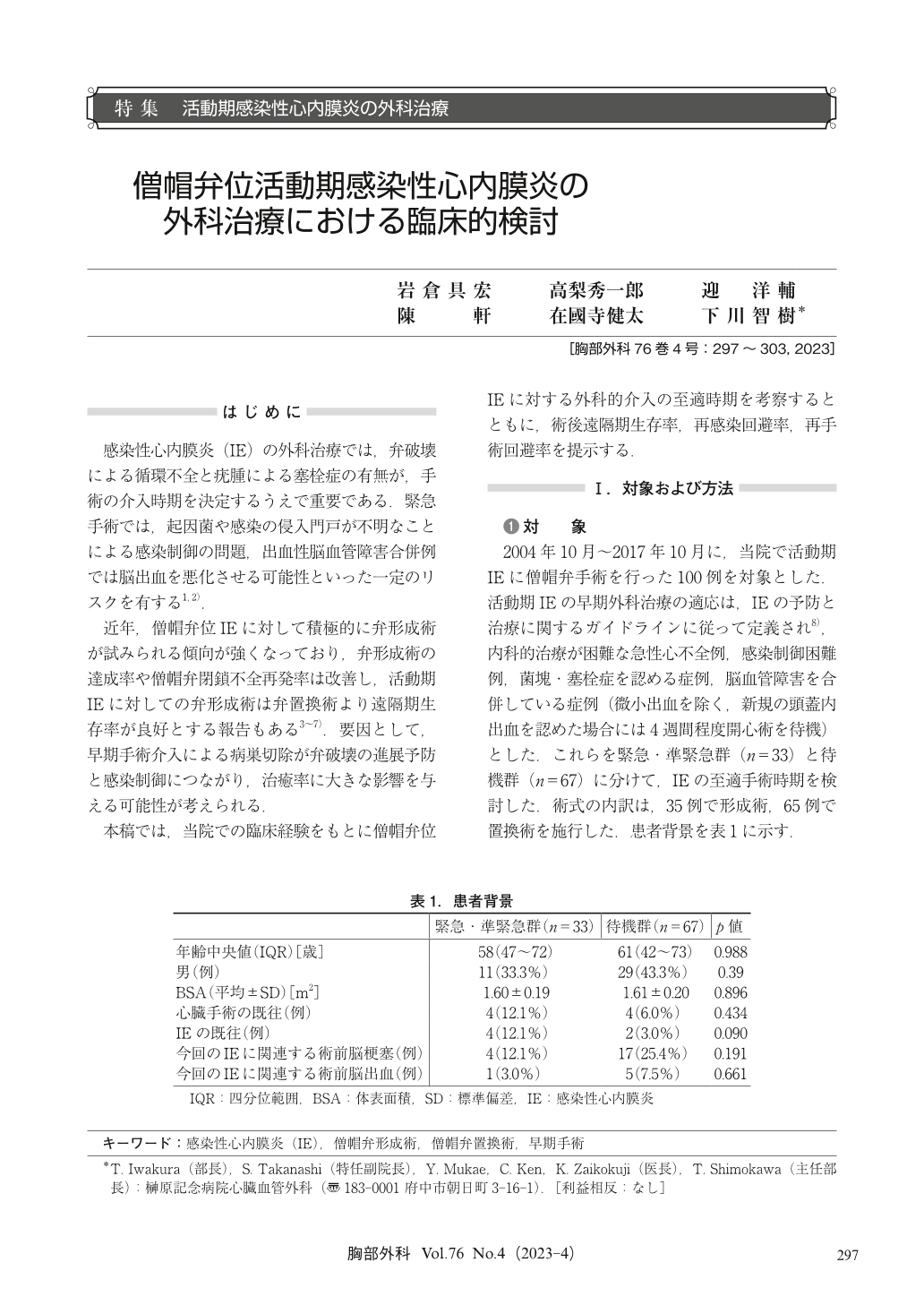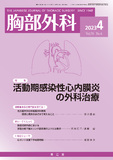Japanese
English
- 有料閲覧
- Abstract 文献概要
- 1ページ目 Look Inside
- 参考文献 Reference
感染性心内膜炎(IE)の外科治療では,弁破壊による循環不全と疣腫による塞栓症の有無が,手術の介入時期を決定するうえで重要である.緊急手術では,起因菌や感染の侵入門戸が不明なことによる感染制御の問題,出血性脳血管障害合併例では脳出血を悪化させる可能性といった一定のリスクを有する1,2).
In the surgical management of infective endocarditis (IE), the presence of circulatory failure from valve destruction and vegetation embolization are important factors in determining the timing of surgery. Emergency surgery carries certain risks, such as infection control problems due to the unknown portal of entry of bacteria and infection, and the possibility of worsening cerebral hemorrhage in patients with hemorrhagic cerebrovascular disease. In recent years, there has been a trend toward more aggressive attempts at mitral valve repair for mitral IE, with improved success rates and rates of recurrent mitral regurgitation, and some reports suggesting that valve repair for active IE has better long-term survival rates than valve replacement. One possible factor is that early surgical intervention to resect the lesion may have a significant impact on the cure rate by preventing progression of valve destruction and controlling infection. Based on our clinical experience, we discuss the optimal timing of surgical intervention for mitral valve IE and present the postoperative remote survival rate, avoidance rate of reinfection, and avoidance rate of reoperation.

© Nankodo Co., Ltd., 2023


